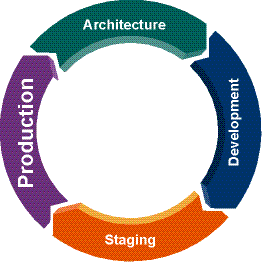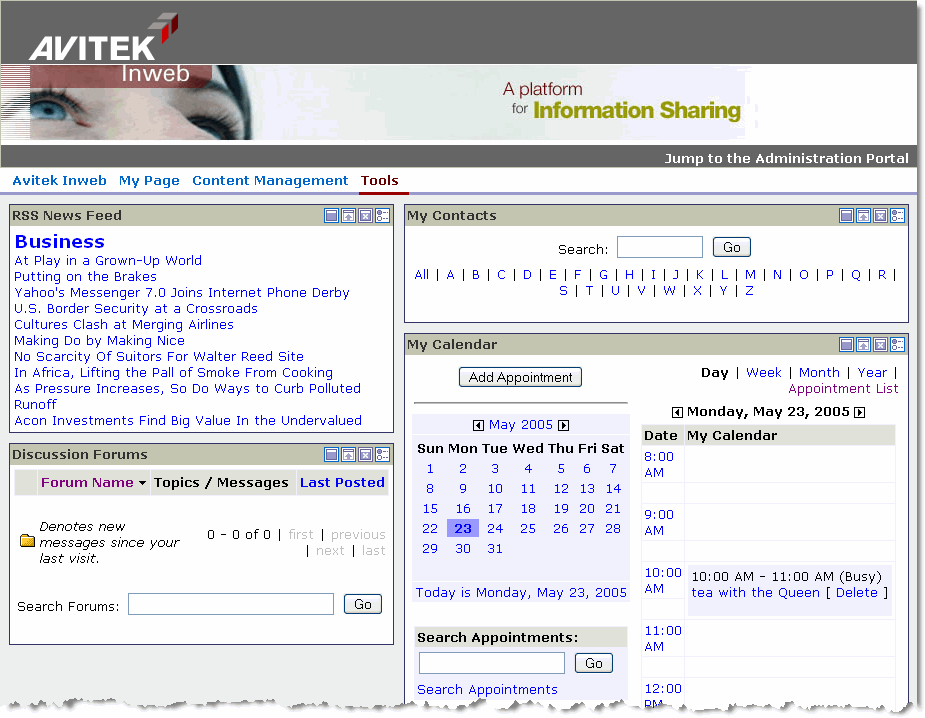







|
After you have assembled, configured, tested, and deployed your portal application, it moves into the production phase, shown in Figure 6-1.

In the production phase, where users are accessing your application, you manage and tune your live portal application. Many tasks at this phase, such as managing users, managing content, modifying interaction management rules, and configuring visitor entitlements and delegated administration are identical to tasks you may perform in staging. The difference is that the staging tasks are for the purpose of getting your public portals ready to go live, and production is for true runtime application management. Part of the portal life cycle involves moving live data from production back to staging for testing application updates against real data.
Tasks you perform at this phase include managing existing portal resources, creating desktops, creating desktop and community templates, managing users, applying of delegated administration and visitor entitlement roles to resources, adding and modifying content, and resetting or modifying interaction management rules.
In production, end users can also create communities, and they can customize their portal environments using the WebLogic Portal visitor tools.
The primary tools used in this phase are the WebLogic Portal Administration Console, the WebLogic Portal Production Operations Tools (to move database and LDAP data between staging, development, and production), and any external content or security providers you are using.
This chapter includes the following sections:
Figure 6-2 shows a sample portal desktop that includes a header region, multiple pages, and multiple portlets on the active page. The portlets contain various types of content and process flows, such as a news feed and a calendar.

The following are possible production tasks that were involved in creating this portal desktop:
The primary tools that portal administrators use in managing portal applications in a live production environment are the WebLogic Portal Administration Console and the WebLogic Portal Production Operations Tools (for moving data among environments for development and testing (staging).
The following are links to the development section for each of the WebLogic Portal feature guides:


|